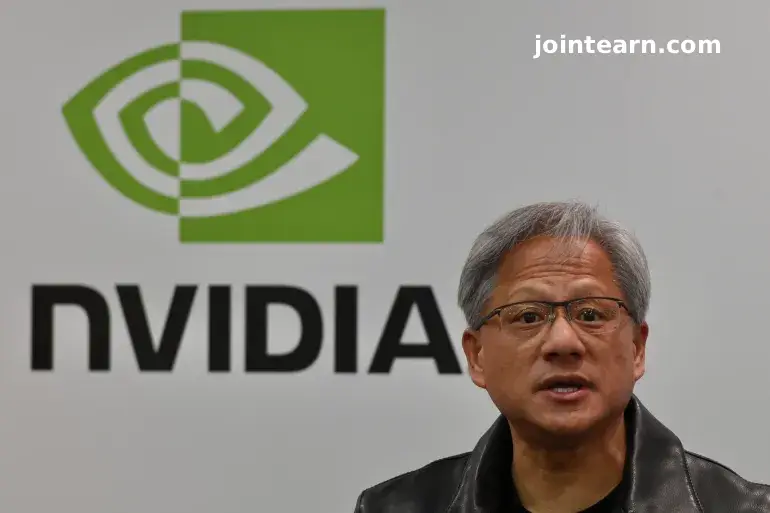
Nvidia, the global leader in artificial intelligence (AI) chips, has announced a landmark deal to build seven AI supercomputers for the United States Department of Energy (DOE). The project, part of a sweeping expansion in U.S. computing power, aims to enhance national security, energy research, and nuclear weapons maintenance.
Speaking at Nvidia’s GPU Technology Conference (GTC)—held for the first time in Washington, DC—CEO Jensen Huang revealed that the company has amassed $500 billion in bookings for its AI processors. He described the DOE collaboration as a strategic leap forward for both Nvidia and U.S. innovation.
“Putting the weight of the nation behind pro-energy growth completely changed the game,” Huang said, crediting President Donald Trump’s policies for bolstering domestic technological investment. “If this didn’t happen, we could have been in a bad situation, and I want to thank President Trump for that.”
AI Supercomputers to Power US Energy and Defense Research
The seven new supercomputers, according to Huang, will support two critical missions:
- Maintaining and modernizing the U.S. nuclear weapons arsenal, and
- Advancing research into alternative energy sources, including nuclear fusion.
The largest system will be built in partnership with Oracle, featuring 100,000 of Nvidia’s cutting-edge Blackwell AI chips. These systems will allow U.S. scientists and defense experts to run simulations previously impossible with conventional hardware—accelerating breakthroughs in nuclear safety, clean energy, and AI-powered modeling.
Nvidia’s stock rose 3.3% to $197.82 following the announcement, reflecting investor optimism about the company’s deepening government partnerships.
Expanding US Tech Capabilities Amid Global Tensions
The new DOE supercomputers come as the U.S. ramps up efforts to retain leadership in AI and quantum computing, amid an ongoing tech and trade rivalry with China. Access to advanced chips from companies like Nvidia has become a flashpoint in global geopolitics, with export controls shaping the race for AI dominance.
While former President Joe Biden had restricted Nvidia’s sales of high-end AI chips to China, the Trump administration’s second term has introduced a more fluid approach—first tightening restrictions, then partially reversing them in July 2025. Huang has repeatedly argued that continued access to the $50 billion Chinese market is vital to sustaining U.S.-based R&D and manufacturing.
New Partnerships: Nokia, Palantir, and Uber
In addition to the DOE deal, Nvidia unveiled several major corporate partnerships that showcase its expanding reach beyond data centers:
- Nvidia–Nokia Collaboration: Nvidia will invest $1 billion for a 2.9% stake in Nokia, jointly developing AI-driven telecommunications solutions for 6G networks. Huang said the partnership aims to “upgrade millions of base stations around the world” and make them more power-efficient.
- Palantir Technologies Alliance: Nvidia will integrate its GPUs with Palantir’s commercial analytics platform, focusing on logistics optimization for corporations such as Lowe’s. The deal underscores Nvidia’s growing footprint in enterprise AI, an area once dominated by Intel.
- Hyperion & Uber Partnership: Nvidia announced Hyperion, its new autonomous vehicle platform, and a partnership with Uber to create a robotaxi network. “This is going to be a new computing platform for us,” Huang said, adding that the move reflects Nvidia’s ambition to shape the future of self-driving technology.
Market analysts say these deals reflect Nvidia’s push to diversify.
“While these projects are smaller compared to spending by the hyperscalers—Microsoft, Amazon, and Google—they open new markets for Nvidia’s AI chips,” noted Gil Luria, analyst at DA Davidson.
Government Focus on AI Infrastructure
Nvidia’s government collaboration mirrors similar initiatives by rivals. Just a day earlier, AMD announced a $1 billion DOE partnership to build two scientific supercomputers for research in nuclear power, cancer treatments, and national security.
Hosting its flagship GTC event in Washington, DC, for the first time signals Nvidia’s pivot toward government and defense contracts, areas once dominated by legacy computing firms. With the U.S. emphasizing AI as a strategic asset, Nvidia’s alignment with federal initiatives may cement its role as a cornerstone of national AI infrastructure.
AI, Energy, and Geopolitics Collide
The DOE partnership highlights the fusion of AI technology and energy policy, with the supercomputers expected to accelerate modeling for nuclear fusion reactors, climate research, and next-generation weapons simulations. Experts suggest this could give the U.S. a decisive edge in scientific computing over international competitors.
Huang’s remarks underscored Nvidia’s strategy of aligning closely with U.S. national priorities.
“Our technology can drive energy independence, strengthen defense, and fuel innovation,” he said. “We’re building not just computers—but the foundation for America’s AI future.”


Leave a Reply